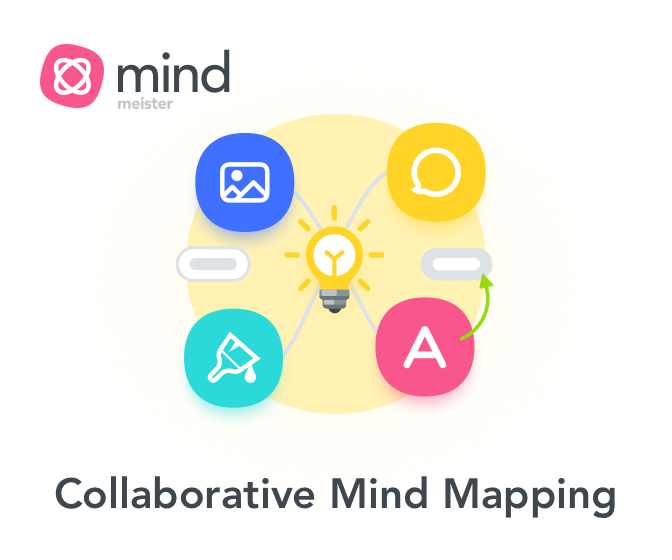Because the checklist is available in Microsoft Word and OpenDocument Text format it's easy to add checks for your specific project.
By downloading our checklist you get:
- The 4 one-off checks you must make at project start-up.
- 12 essential checks to do for each change request.
- 5 ongoing checks you must do to keep project changes under control.
- A document you can edit and share with ease.
Why bad Change Management kills projects
You need this checklist because uncontrolled changes wreak havoc on a project and can lead to its termination. Here are key reasons why uncontrolled changes can kill your project:Scope Creep
Uncontrolled changes result in scope creep, where the project's original scope expands beyond what was agreed. This increases project complexity, time, and resources required, ultimately derailing progress.Resource Misallocation
Uncontrolled changes can disrupt the allocation of resources, causing a strain on the project team. Resources are diverted to work on unplanned changes, leaving other critical project tasks neglected or understaffed.Schedule Delays
Uncontrolled changes can significantly impact project timelines. Additional tasks, revisions, or rework resulting from uncontrolled changes can cause delays and jeopardize the project schedule. This can lead to missed deadlines, increased costs, and stakeholder dissatisfaction.Budget Overruns
Uncontrolled changes can quickly inflate project costs. Using resources to make changes without proper evaluation or approval means you rack up costs without oversight.Quality Compromises
Uncontrolled changes can compromise the quality of project deliverables. Rushed implementations, insufficient testing, or inadequate documentation due to uncontrolled changes may introduce errors, defects, or inconsistencies.Communication and Stakeholder Disengagement
Without proper change control, stakeholders may feel uninformed or excluded from decision-making processes. This lack of communication and involvement can lead to dissatisfaction, resistance, and disengagement, undermining project support and success.Risk Escalation
Uncontrolled changes introduce uncertainties and potential risks. Without proper assessment and mitigation, unanticipated changes may increase project risks, such as compromised security, system failures, or regulatory non-compliance. These risks can have severe consequences and threaten the project's viability.Uncontrolled changes can have a cascading effect on a project, causing scope creep, resource misallocation, schedule delays, budget overruns, compromised quality, communication gaps, stakeholder disengagement, and increased risks. By implementing effective change control processes, projects can maintain stability, ensure stakeholder alignment, and mitigate the detrimental impacts of uncontrolled changes.
Best Practices for Change Management
- Develop a Change Management Plan: Create a comprehensive plan outlining the change management process, including roles and responsibilities, communication strategies, approval mechanisms, and risk mitigation strategies. This plan will serve as a roadmap for navigating changes throughout the project.
- Conduct Impact Assessments: Before implementing changes, assess their potential impact on various aspects such as scope, time, cost, resources, quality, and risks. This evaluation will help you understand the implications of the changes and make informed decisions.
- Engage Stakeholders: Involve stakeholders early in the change management process. Seek their input, address concerns, and communicate the rationale behind the changes. Actively engage stakeholders to gain their support and commitment, ensuring a smooth transition and reduced resistance.
- Communicate Effectively: Maintain clear and consistent communication throughout the change management process. Keep all relevant stakeholders informed about the changes, including their purpose, expected outcomes, and potential impacts. Ensure that communication channels are open, allowing for feedback and addressing questions or concerns.
- Document Changes: Create a structured documentation system to record all changes and related information. This includes change requests, approvals, associated risks, implementation plans, and any necessary updates to project documentation. A well-maintained change log provides visibility, accountability, and traceability.
- Monitor and Track Changes: Continuously monitor and track the progress of changes against established milestones and objectives. Regularly review the status of change requests, implementation progress, and outcomes. This allows you to identify and address any deviations or issues promptly.
- Test and Validate Changes: Before implementing changes, thoroughly test and validate them to ensure they align with project objectives and quality standards. This includes assessing the impact on existing processes, conducting user acceptance testing, and obtaining stakeholder feedback.
- Provide Training and Support: Equip team members and end-users with the necessary training, documentation, and support to navigate the changes successfully. This helps to minimize disruptions, build confidence, and ensure a smooth transition to the new processes or systems.
- Audit Change Management: Conduct regular audits of the change management process to ensure its effective. Use the Change Management Checklist provided to assess the implementation of best practices, evaluate compliance with the Change Management Plan, and identify areas for improvement. The checklist serves as a valuable tool for systematically reviewing and validating the key components of your change management process. Utilize the checklist to assess documentation, stakeholder engagement, communication practices, change impact assessments, testing procedures, training efforts, and overall change adoption.
- Capture Lessons Learned: Capture lessons learned throughout the change management process. Identify successes, challenges, and areas for improvement. Apply these insights to future change initiatives, enhancing the organization's change management capabilities.
The contents of the Change Management Checklist
Field
Field Description and Tips to Complete
Project details and document control
Provide information on the project and document:
- Project Name and Reference
- Document information: ID, owner, issue date, last saved date, file name or path
- Document history: version, issue date, changes.
- Document approvals: role, name, signature, date
Project Start-up
One Time Activities
- 1. Has an approved change management process been identified and documented for the project?
- 2. Has a Change Management Plan been created and approved?
- 3. Has the change management process been communicated to the project team?
- 4. Has the change budget been approved and created in the finance system?
Project Delivery
One Time Activities
- 1. Has the change request been documented?
- 2. Has a resource been identified to manage and implement the change?
- 3. Has the effort to complete the change request been estimated, and has that estimate been presented to the person/group responsible for approving the change?
- 4. Has the impact of the change been evaluated as it relates to scope, time, duration, cost, resource, deliverable, product, process, risk, and quality?
- 5. Has the change request been approved?
- 6. Has the work to complete the change request been incorporated into the project’s schedule?
- 7. Has the test plan been updated to reflect the testing of the completed change?
- 8. Has the change completion date been communicated to the team and the stakeholders?
- 9. Has the work necessary to incorporate the change been completed?
- 10. Has the completed change been tested?
- 11. Has everyone affected by the change been notified?
- 12. Do all users and admins have the training, documentation, and ability to support the change?
Iterative, ongoing activities
- 1. Update the Change Management Log as specified in the Change Management Plan.
- 2. Use the Project Status Reports to keep the Project Board/ Sponsor and Stakeholders updated on the progress of Change Requests.
- 3. Update the Project Team on the status of Change Requests via regular team meetings.
Tips for using the checklist
- Choose the Preferred Format: The Project Change Management checklist is available in multiple formats, including Word (docx, doc), PDF, and OpenDocument. Select the format that is most convenient for you and your team to work with.
- Understand the Table Structure: The checklist is presented in a table format with three columns. The first column provides a description of the check you need to make. The second column is for ticking "Yes" if the check is applicable or has been completed successfully. The third column is for ticking "No" if the check is not applicable or has not been completed, and "N/A" if the check is not applicable to your specific project.
- Customize the Checklist: Tailor the checklist to fit the specific needs of your project. You can add or remove checks based on your project requirements. Use the editable format (Word or OpenDocument) to easily modify the checklist and include additional checks that are relevant to your project's unique circumstances.
- Ensure Clear Communication: Share the checklist with your project team and stakeholders. Clearly explain the purpose of the checklist and its importance in ensuring project quality and successful delivery. Encourage everyone involved to actively participate in completing the checks and provide necessary input.
- Regularly Update the Checklist: As the project progresses, revisit the checklist regularly to track the completion status of each check. Update the "Yes," "No," or "N/A" columns accordingly to reflect the current status. This will help you maintain an accurate record of the project's Change Management efforts.
- Collaboration: Encourage collaboration and involvement from the relevant team members for each check. Delegate responsibilities and assign ownership for completing specific checks to ensure thoroughness and accountability.
- Document Evidence: Where applicable, document evidence or supporting information related to each check. This can include attachments, reports, or any other relevant documentation that demonstrates compliance or completion of the specific check.
- Refer to the Checklist at Key Milestones: Utilize the checklist as a reference tool during important project milestones. Regularly review the checklist to ensure that all necessary checks have been completed or are on track. This will help you maintain project health and mitigate potential risks.
Download this Change Management checklist
Word download - Project Change Management checklist (Word .doc)
Word download - Project Change Management checklist (Word .docx)
OpenDocument Text - Project Change Management checklist (.odt)
PDF download - Project Change Management checklist (.pdf)
Change Management Plan Template
More Project Templates to download
- Excel Project Plan - FREE excel Gantt Chart template for project planning
- WBS Checklist - Download a Free checklist for reviewing Work Breakdown Structures
- Project Management Templates - View our collection of FREE templates for Project Managers
- MS Project schedules - Get a ready made Microsoft Project Plan for your Project.
- Prince2 Templates - All of the Prince2 Templates available here for FREE.
- Risk Register template - Download a free Risk Register Template for managing your risks.
- Software Project Plan - Get a ready Made Microsoft Project Plan for your Software Implementation Project.
- WBS examples - 22 Examples of real world Work Breakdown Structures.


